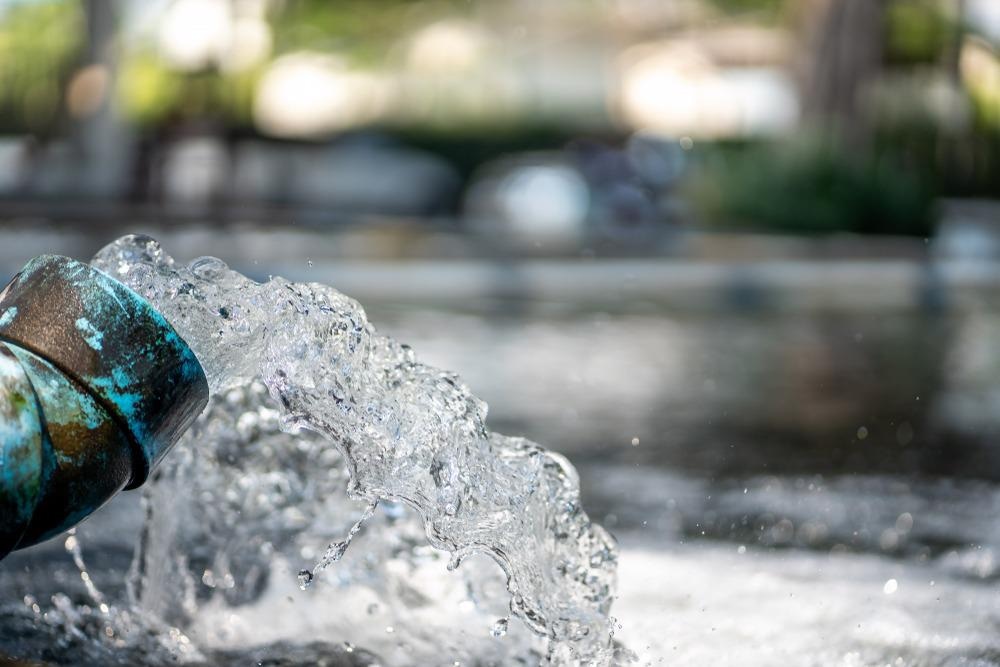Inorganic nanoceramics are used in various applications, including water treatment, drug delivery, and other industrial applications. In an article recently published in Scientific Reports, the researchers investigated the effect of nickel ion (Ni2+) on silica magnesium zirconium copper nanoceramic’s (SMZC’s) structural, morphological, and magnetic behaviors.

Study: Ecofriendly synthesis and characterization of Ni2+ codoped silica magnesium zirconium copper nanoceramics for wastewater treatment applications. Image Credit: Poh Smith/Shutterstock.com
Nanomaterials (NMs) in Wastewater Management
Wastewater management is critical in controlling pollution. However, the current treatment methods are inefficient in eliminating new pollutants. Although ultraviolet (UV) irradiation and chlorination are frequently employed disinfecting techniques, these approaches have drawbacks such as disinfecting by-products (DBPs) formation, industrial effluent turbidity, and energy consumption. Hence, a robust disinfection technology is required to achieve excellent disinfection.
Owing to the development of nanobiotechnology, NMs are explored for their antibacterial properties. The NMs are stimulated under solar irradiation, which could be applied as a disinfectant individually or in combination with other technologies to promote disinfection. Mesoporous silicate nanocomposites have interesting properties such as good texture, high surface area, and amenable pores. Such materials are favorable for their applications in catalysis, sensors, drug delivery, coating, optoelectronics, and adsorption.
Ni2+ Co-doped SMZC Nanoceramics
In the present work, the researchers used the sol-gel route to develop SMZC nanoceramics. They addressed the high chemical stability of the SMZC framework through the sol-gel assembly and doped it with (0.0–0.7) Ni2+ nanoceramics.
The doped nanoceramics were supported by metal precursors achieved due to agglomeration during synthesis. The produced SMZC framework was mesoporous with high crystallinity, in addition to the functionalized structural integrity of SMZC/ Ni2+ nanoceramics.
All inspected nanocomposites were screened for antimicrobial and toxicity performance. The results confirmed that SMZC-0.7Ni showed potential antimicrobial activity and helped eliminate waterborne pathogens in wastewater when used in an appropriate dose.
Research Findings
The chemical structure of pure and Ni2+-doped SMZC nanoceramics was explored by performing X-ray photoelectron spectroscopy (XPS). The atomic concentrations obtained for pure and doped samples showed the binding energy for Mg, Si, and Zr at 12, 24.99, and 154 electronvolts, respectively.
The XPS spectra showed characteristic binding energies for oxygen (O), Ni, and Cu at 534, 857, and 979 electronvolts, respectively. The peak found at 534 electronvolts corresponded to the SMZC nanoceramic’s O 1s peak of Si-O and Si-O-M (M = Mg, Zr, Cu). The team observed that the Ni2+-doped sample’s binding energy was higher than the pure SMZC nanoceramics, confirming the effect of Ni2+ on SMZC’s crystal structure.
The images from the transmission electron microscope (TEM) revealed high-ordered pure and Ni-doped SMZC nanoceramics with cluster formation in a well-ordered manner. Visually, fine nanoceramics and nanoclusters appeared with a slight difference. Low magnification TEM showed regular nanoceramics of sizes ranging between 7 and 16 nanometers.
In UV-visible spectroscopy, with the increase in Ni dopant in SMZC films, the transmittance edge moved slightly towards a higher wavelength due to improved crystallinity. However, above the transmittance edge, the absorption was negligible and the SMZC films appeared to be optically transparent.
The antimicrobial effects of SMZC nanocomposites with varying ratios of doped Ni+2 (0.0,0.3,0.5 and 0.7) were screened by conducting a qualitative agar diffusion assay and quantitative total viable cell assay against four microbial species namely, Escherichia coli O157:H7, Staphylococcus aureus, Candida albicans, and Aspergillus niger.
The results from the antimicrobial screening showed that SMZC-0.0Ni had no biocidal effect against any of the microbial agents. The simulation results indicated a significant inhibitory effect by SMZC-0.5Ni and SMZC-0.7Ni nanocomposites than SMZC-0.3Ni against all mentioned pathogens.
The well diffusion assay revealed 25, 19, 17, and 16 millimeters inhibition zones for SMZC-0.7Ni against Escherichia coli O157:H7, Staphylococcus aureus, Candida albicans, and Aspergillus niger, respectively.
Conclusion
In conclusion, the researchers have grown highly crystalline Ni2+doped silicate-based nanoceramics by using a sol-gel process in a controlled manner and calcination at 800 degrees celsius. TEM, XRD, and XPS analyses revealed that the SMZC and its Ni2+-doped nanoceramics consisted of a crystalline SMZC matrix with Ni2+ in their crystalline structure.
Optical analysis of the samples showed direct and indirect transitions for SMZC. The increasing wavelength did not affect the refractive index (RI). However, the RI slightly increased with increased Ni content. Moreover, the magnetic results confirmed that the presence of higher magnetization was influenced by the SMZC composition due to the formation of a smooth hysteresis loop.
The result from antimicrobial activities showed that SMZC-0.7Ni nanocomposites had excellent antimicrobial properties against negative and positive bacterial species and fungal strains; hence these nanocomposites were applied to treat contamination in wastewater by eradicating the waterborne microorganisms.
Reference
A. M. Mansour, Bahaa A. Hemdan, Amir Elzwawy, Ali B. Abou Hammad and Amany M. El Nahrawy (2022). Ecofriendly synthesis and characterization of Ni2+ codoped silica magnesium zirconium copper nanoceramics for wastewater treatment applications. Scientific Reports. https://doi.org/10.1038/s41598-022-13785-y
Disclaimer: The views expressed here are those of the author expressed in their private capacity and do not necessarily represent the views of AZoM.com Limited T/A AZoNetwork the owner and operator of this website. This disclaimer forms part of the Terms and conditions of use of this website.